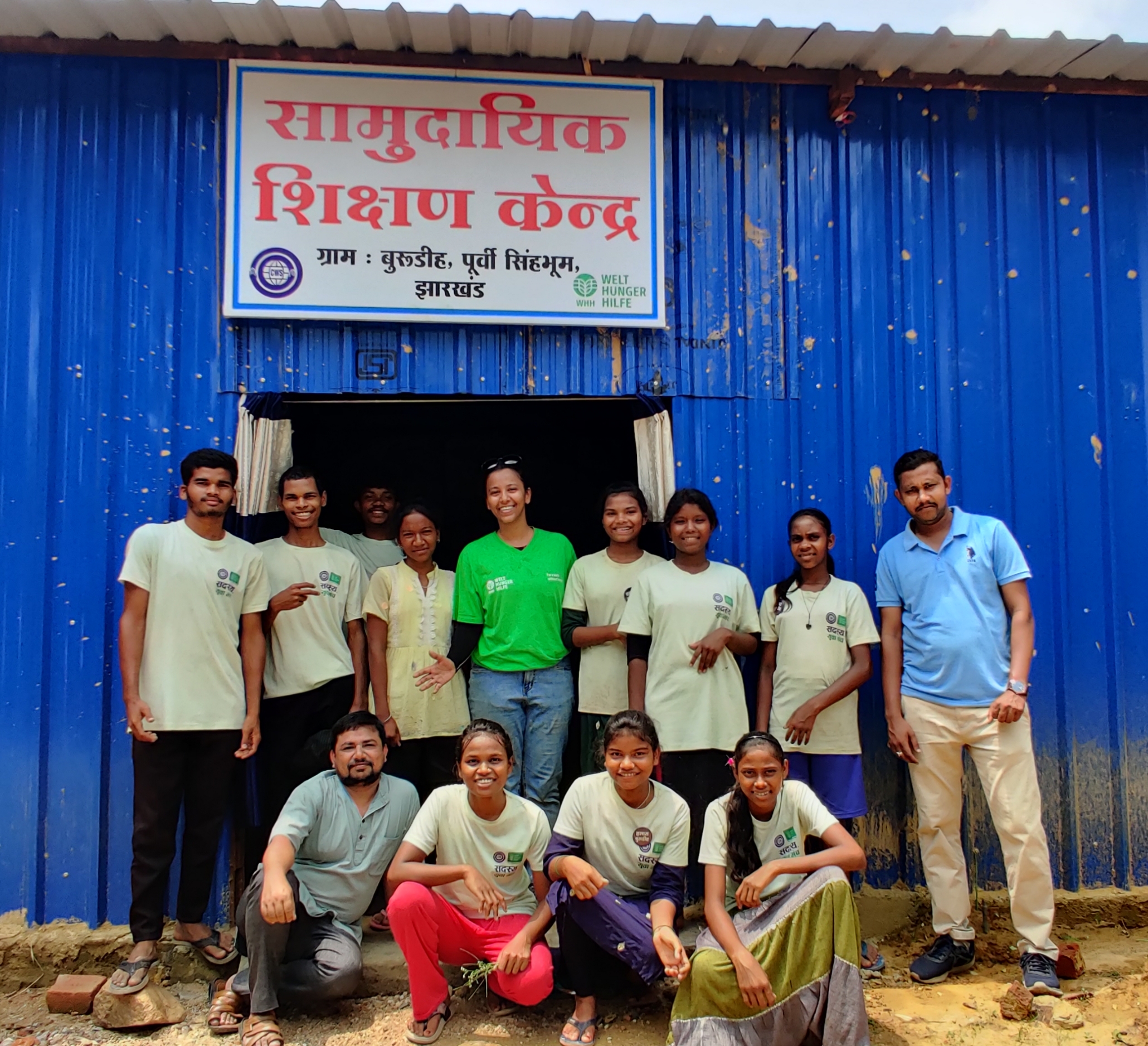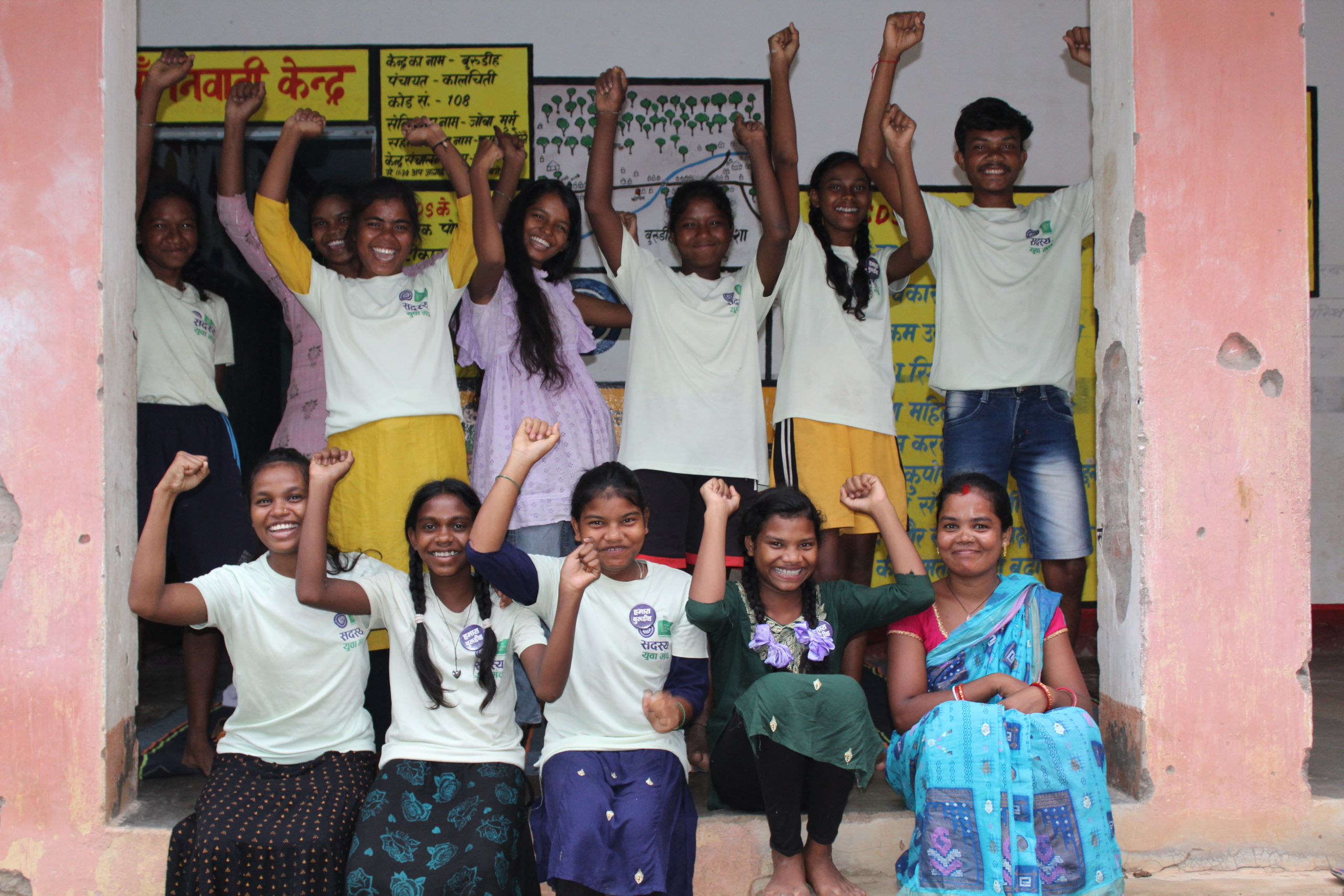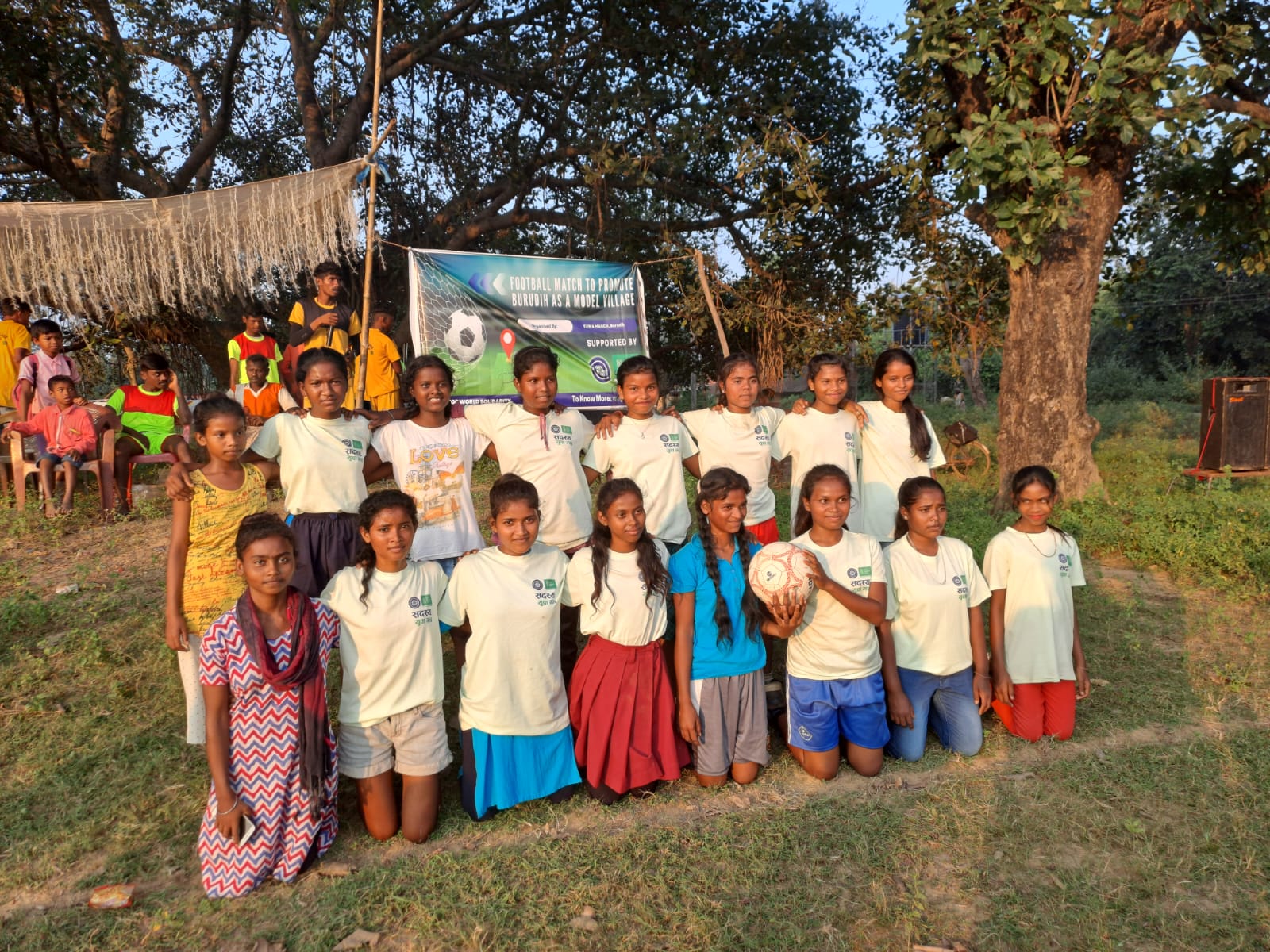In a small remote tribal hamlet with 65 households, the road to food and nutrition security rests on the shoulders of the young changemakers. In every way possible, the youths of this tribal village are breaking stereotypes and changing the ways their community thinks about health and nutrition.
It is overwhelming to observe how 16-year-old Pipasa Murmu seamlessly explains the causes of malnutrition and hidden hunger among tribal children and pregnant mothers. Asked about food and nutrition security means to her, she explains with pride, “By nutrition security, we mean no child is malnourished. By nutrition security, we mean knowing the causes of anaemia…to ensure minimum five food groups in our diets, washing hands before eating, keeping drinking water clean, keeping our space and village clean” as she keeps on adding to her list.

This is not part of her school curriculum. Pipasa – a student of class 10th – is a highly vocal and motivated member of a Youth Group receiving trainings on ways to ensure food and nutrition security in their village of Burudih. The 25-member group was formed in 2022 by Welthungerhilfe in partnership with Centre for World Solidarity (CWS) within Nutrition Smart Community project.
The village of Burudih is an interior tribal hamlet located roughly at about 70 kms from the industrial city of Jamshedpur in Jharkhand. It is largely dominated by Scheduled Tribes called Santhals and Particularly Vulnerable Tribal Groups (PVTGs), who have lived here since long. For centuries, they survived on indigenous food and thrived on forest produce for meeting their nutrition. However, over time, the community shifted to mono-cropping cash crops like paddy (rice) and reduced their dependency on forest because of strict government regulations.
Due to subsidies on commercial food items like rice, sugar, salt and refined oil, the communities consumed adequate energy and protein, but micronutrient intake was inadequate. As a result, the tribal population is disproportionately affected by undernutrition, anaemia and hidden hunger. Malnutrition is a serious public health problem in Jharkhand.

As per the National Family Health Survey-4 data for Jharkhand, every second under-5 child in the state is stunted (45 per cent) and underweight (47 per cent), and every third under-5 child is affected by wasting (29 per cent). Nearly 70 per cent of children between 6-59 months are anaemic.
“Lack of awareness on micronutrients is the prime reason for falling sick frequently. When we started our trainings, we realised that major part of our diet was dependent on carbohydrates like rice and potato, which is causing many deficiencies among new-born and mothers. We never thought about including leafy vegetables in our diets, which my grandmother used to collecting from our forests. Now, we have attained understanding of the diet we must consume, and I make sure I tell my mother to include green leafy vegetables and eggs, meats, or fish,” says Pipasa, very confidently with an enthusiastic smile.

Pipasa and her young cadre call meetings with the village elders on issues such as setting kitchen nutrition gardens in everyone’s backyard so that every family can include micronutrients in their diets and address the causes of hidden hunger. In addition to it, groups conduct village cleanliness and sanitation drives, door-to-door campaigns on school drop-outs specially concerning girl education and spreading menstrual hygiene awareness for young women as part of awareness program.
The youth group, which consists of both girls and boys, together talk on issues which were once forbidden in public.
Pipasa recalls that she was one of the girls who in the past never stepped out of their houses or even spoke to boys because of strict gender and patriarchal norms. “Just a year back, women were hesitant in talking about menstrual hygiene issues. Now we are discussing it in open. The project motivated me along with others to form a youth group because we are the future of the village. We were trained on issues that concern everyone’s health. And this gave us immense confidence,” she says.
“When we become mothers, we should be equipped with enough knowledge,” says Pipasa, who aspires to become a civil servant and wants to improve the social and economic conditions of her tribal community in particular.
Other than the campaigns, the youth group uses other artistic mediums like street plays and friendly football matches to talk on issues of nutrition and food security. As a result, the participation level in Burudih on village development plans has gone up to an all-time high.

A recent survey within the project shows that out of 65 families in the village, 45 of them have initiated kitchen gardening growing varieties of vegetables, which was down to four families a year back. Similarly, on youth’s appeal for regular medical check-ups, 7 out of 10 children found in severe and moderate acute malnutrition category have now completely recovered with the help of dietary modifications. Along with this, 11 school drop-outs have successfully re-joined school because of the group’s rigorous counselling with parents.
With the world’s largest youth population, things are beginning to change in India. And it can be witnessed on the ground- in small villages like Burudih.
So where does Pipasa see her village in the next five years?
“I want to see every family taking topics of nutrition seriously, every family maintaining kitchen gardens in their backyards, every girl completing her school or college degree, every new born to be born healthy, ” says Pipasa.




